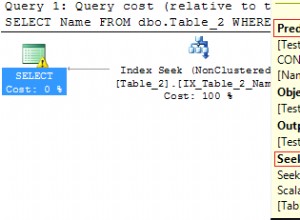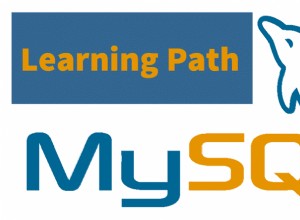W katalogach systemowych Postgresa to podstawowy zestaw kompletnych informacji o instalacji i bazach danych. Katalogi systemowe to najbardziej wiarygodne źródło informacji.Schemat informacji jako funkcja pomocnicza jest oparta na katalogach systemowych i zapewnia kompatybilność z innymi RDBM:
Widoki zmaterializowane nie są obiektami w standardzie SQL, dlatego schemat informacyjny nie zawiera informacji na ich temat.
Katalog systemowy pg_class zawiera wszystkie informacje o uprawnieniach w kolumnie relacl .
Jeśli kolumna ma wartość null wtedy właściciel ma wszystkie uprawnienia.
Pusty ciąg jako nazwa użytkownika w acl ciąg oznacza public .
create materialized view test_view as select 1;
grant select on test_view to public;
grant delete on test_view to a_user;
select
coalesce(nullif(s[1], ''), 'public') as grantee,
s[2] as privileges
from
pg_class c
join pg_namespace n on n.oid = relnamespace
join pg_roles r on r.oid = relowner,
unnest(coalesce(relacl::text[], format('{%s=arwdDxt/%s}', rolname, rolname)::text[])) acl,
regexp_split_to_array(acl, '=|/') s
where nspname = 'public' and relname = 'test_view';
grantee | privileges
----------+------------
postgres | arwdDxt
public | r
a_user | d
(3 rows)
Potrzebujesz funkcji do pokazywania uprawnień w czytelnym format:
create or replace function priviliges_from_acl(text)
returns text language sql as $$
select string_agg(privilege, ', ')
from (
select
case ch
when 'r' then 'SELECT'
when 'w' then 'UPDATE'
when 'a' then 'INSERT'
when 'd' then 'DELETE'
when 'D' then 'TRUNCATE'
when 'x' then 'REFERENCES'
when 't' then 'TRIGGER'
end privilege
from
regexp_split_to_table($1, '') ch
) s
$$;
Użyj:
select
coalesce(nullif(s[1], ''), 'public') as grantee,
priviliges_from_acl(s[2]) as privileges
from
pg_class c
join pg_namespace n on n.oid = relnamespace
join pg_roles r on r.oid = relowner,
unnest(coalesce(relacl::text[], format('{%s=arwdDxt/%s}', rolname, rolname)::text[])) acl,
regexp_split_to_array(acl, '=|/') s
where nspname = 'public' and relname = 'test_view';
grantee | privileges
----------+---------------------------------------------------------------
postgres | INSERT, SELECT, UPDATE, DELETE, TRUNCATE, REFERENCES, TRIGGER
public | SELECT
a_user | DELETE
(3 rows)




